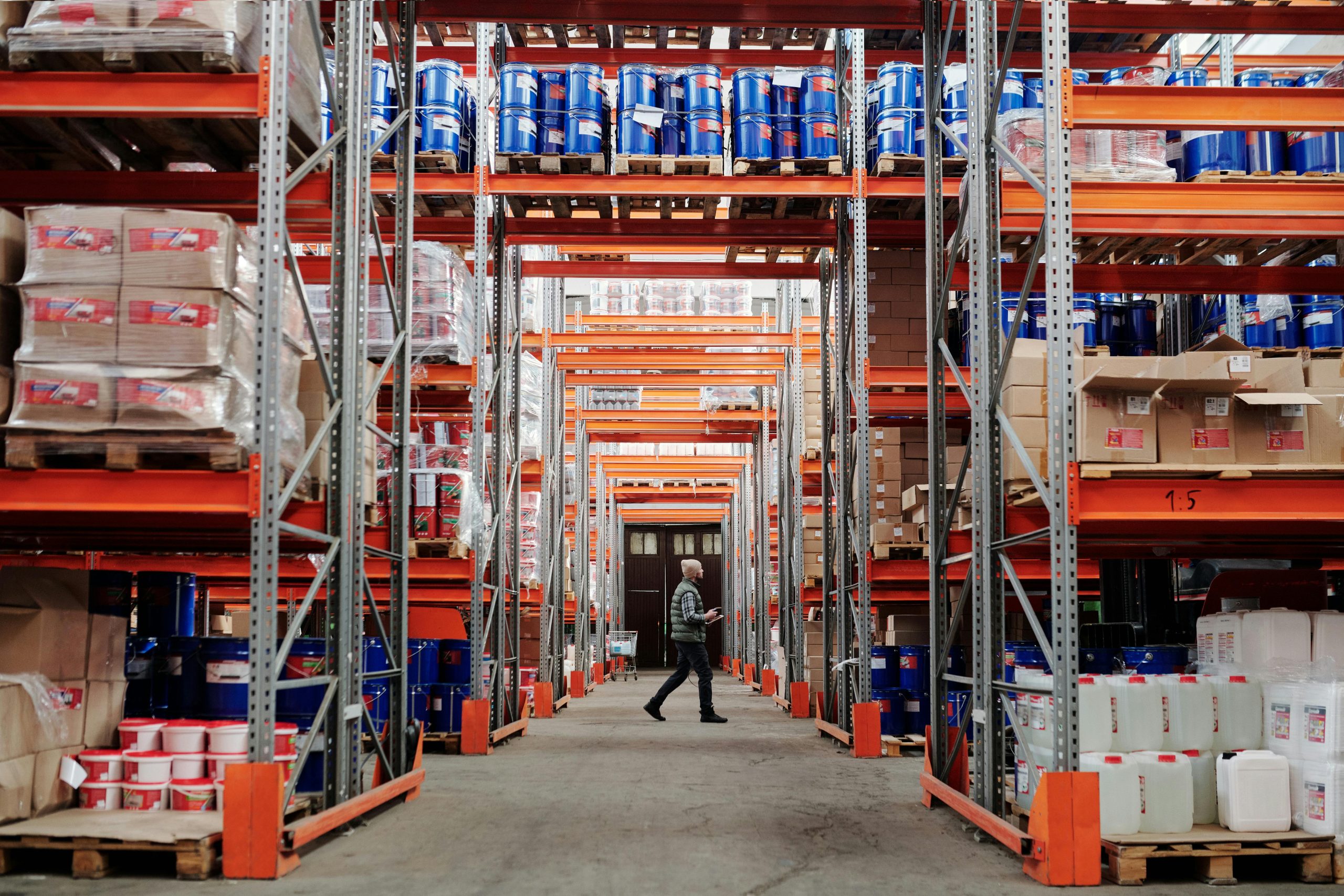Inside Amazon’s Plans to Replace Workers With Robots – The New York Times: The New Fault Line: Automation’s Advance into Cognitive Labor

The narrative of automation has long been tethered to the visual spectacle of the factory floor or the automated fulfillment center. However, as of late 2025, a more pervasive and arguably more significant transformation is underway, one that directly targets the domain of the college-educated professional. Artificial Intelligence (AI) has moved beyond simple task execution to demonstrate a capacity for complex, cognitive responsibility, creating a new fault line in the modern workforce.
Targeting the Ivory Tower: The Repercussions for White-Collar Functions
The disruption is no longer confined to the loading dock; it is actively reshaping departments focused on data synthesis, predictive modeling, and administrative execution. The ability of advanced generative AI systems to process vast datasets, synthesize findings, draft complex documents, and even generate functional computer code means that roles centered on routine analysis or basic programming—tasks that once required years of specialized training—are now becoming increasingly susceptible to automation via autonomous software agents. This invasion of the “white-collar” domain represents a paradigm shift in the application of automation technology, challenging the long-held assumption that advanced education provided inherent protection against technological displacement.
The most emblematic area of this cognitive shift appears to be within the People eXperience and Technology (PXT) division itself. Reports in mid-October 2025 indicate that Amazon is preparing for a significant reduction in headcount within its internal HR organization, concurrently accelerating its investment in AI infrastructure. Functions related to recruitment screening, initial candidate filtering, employee query resolution, and internal process management are precisely the areas ripe for AI systems capable of pattern recognition and rule-based decision-making. When AI can manage the initial stages of onboarding, benefits inquiries, and even performance tracking with greater consistency and speed, the need for large support teams diminishes significantly, demonstrating a functional replacement rather than mere assistance.
Examining the Corporate Calculus: Profitability Versus Human Capital
The strategic decisions driving this aggressive automation push are rooted in a clear, though often critically examined, economic model. The transition is fundamentally about optimizing the balance sheet by substituting variable, high-overhead human costs with fixed, amortized capital expenditure on technology.
The Economic Justification: Trimming Costs for AI Investment
The projected savings derived from workforce reductions in corporate roles are directly linked to funding the colossal capital outlays required for maintaining a leadership position in the AI race. Amazon is reportedly set to invest up to $100 billion in AI and cloud infrastructure over the coming year. By aggressively trimming employee-related expenses—which encompass salaries, benefits, insurance, and potential long-term liabilities—the company frees up the necessary liquidity to compete with other technology giants pouring equivalent sums into proprietary model development and data center expansion. In this framework, every human salary deferred or eliminated is an investment accelerated into the infrastructure deemed essential for long-term profitability and technological supremacy.
A Comparison of Corporate Contraction Across the Technology Sector
This organization’s actions are not occurring in isolation; they reflect a broader, disturbing pattern emerging across the entire landscape of major American technology corporations. Analysis of recent corporate disclosures and analyst reports from the first and second quarters of 2025 reveals a consistent theme: the adoption of sophisticated AI tools is being leveraged as the primary justification for large-scale workforce contraction. From reductions in engineering teams due to code generation tools to the shrinking of customer support departments following the deployment of advanced virtual agents, the trend is industry-wide. This pattern suggests a fundamental recalibration across the sector, where achieving ‘efficiency’ through headcount reduction has become the normalized standard operating procedure under the banner of ‘innovation’ or ‘progress’.
The Debate Over Job Creation Versus Job Displacement
A central tension in this ongoing development is the public discourse surrounding whether this automation is truly eliminating roles or simply transforming them into new, perhaps better, opportunities. The official corporate position generally advocates for the latter interpretation, framing the situation as a historical evolution rather than an outright reduction in the need for human contribution.
The Company Stance: Up-Skilling and Repurposing the Human Element
Proponents of the current strategy often point to substantial financial commitments made toward internal education and training programs. The argument posits that by eliminating the most monotonous and physically taxing duties, the human workforce is being “repurposed” into higher-value roles that require complex problem-solving, strategic thinking, and the crucial, empathetic decision-making that machines cannot yet replicate. This narrative suggests a symbiotic relationship: more productivity via robots leads to more complex, better-compensated human roles.
Skepticism from Analysts: The Unspoken Consequences of Efficiency
Conversely, critical observers and labor analysts express considerable skepticism regarding the proportionality of this supposed job creation. They question whether the number of new, highly technical roles being created will adequately absorb the volume of workers displaced from established, often lower-barrier-to-entry, positions. The concern centers on the speed of displacement versus the speed of retraining. Anthropic CEO Dario Amodei, for instance, projected that AI could eliminate up to 50% of all entry-level white-collar jobs within the next one to five years, a projection that fuels significant concern about a structural gap emerging. The fear is that the promised new jobs require specific, high-level competencies that the majority of the displaced population simply cannot attain in the requisite timeframe.
Technological Underpinnings of the Current Automation Wave
To fully appreciate the capacity of the new automated workforce, one must look closer at the underlying engineering breakthroughs that have made this current wave possible, distinguishing it from earlier, less capable generations of factory machinery. The confluence of improved hardware, sophisticated software architectures, and massive data availability is the true engine of this change.
Advancements in Sensory Technology for Industrial Robotics
As previously noted with the warehouse robotics, the leap in tactile and visual processing is critical. It is not simply about moving an object from point A to point B; it is about understanding the object’s state, its relationship to its neighbors, and the environmental context of its placement. New sensor suites integrated into machines are enabling innovations such as enhanced vision systems and tactile feedback, allowing for real-time mapping of friction, temperature, and minute spatial orientation. This tactile awareness is what unlocks the ability to safely and reliably handle a highly heterogeneous inventory, moving from palletized uniformity to the complex arrangement of individual consumer goods that characterizes modern e-commerce fulfillment.
The Role of Advanced Learning Models in Real-Time Decision Making
Underpinning this physical hardware is the software intelligence. The current generation of robots is not merely executing pre-programmed routines; they are running complex inference models based on vast training data sets, allowing them to demonstrate a form of adaptive reasoning. When a robot encounters a novel stacking configuration or a previously unseen blockage, it utilizes its onboard artificial intelligence—often leveraging advanced models—to interpret the situation against its digital blueprint and adapt its physical response dynamically. This capability for on-the-fly problem-solving is what allows a team of machines to operate with a collective intelligence that far exceeds the sum of their individual, pre-scripted functions.
Societal Ripples: Broader Economic and Labor Market Implications
The changes occurring within this single major corporation are a microcosm of a global transition that portends significant societal restructuring over the next two to three decades. The ripple effects extend far beyond the payroll and into the fabric of community stability and professional identity.
The Challenge to Traditional Career Ladders and Skill Valuation
If roles dependent on routine cognitive tasks—from paralegal work to entry-level software engineering—are increasingly automated by capable AI agents, the traditional progression paths for ambitious young professionals are fundamentally altered. The lower rungs of many professional ladders, which historically served as essential training grounds, are the very steps being removed. This creates a vacuum where entry into high-skill professions becomes contingent on possessing a more advanced or niche skill set immediately upon entering the workforce, placing immense pressure on educational systems to keep pace with industry needs, which themselves are in flux.
Geographic Disparities in Automation Adoption and Impact
The speed and depth of automation are unlikely to be uniform across all geographical areas or regulatory environments. Companies may prioritize deployment in regions with favorable capital depreciation rules or where labor costs provide the greatest immediate return on high-tech investment. This uneven adoption risks exacerbating existing economic inequalities between regions that become hubs of automated, high-productivity industry and those whose economies remain heavily reliant on sectors that have not yet undergone, or cannot afford, such radical technological overhauls. The political and social challenge of managing this uneven distribution of technological prosperity will become an increasingly salient policy issue.
Navigating the Next Decade: Strategies for Workforce Resilience
Faced with this accelerating reality, both individuals and policymakers must adopt proactive, adaptive stances to ensure that technological progress translates into societal benefit rather than widespread economic disenfranchisement. The focus must shift from attempting to halt the inevitable to successfully integrating with it.
The Imperative for Continuous Professional Evolution
For the individual professional, the concept of a static, decades-long career based on a single acquired degree is becoming obsolete. The modern economic survival strategy demands a commitment to perpetual, iterative skill acquisition. Workers must cultivate a mindset that views professional development not as a periodic event, but as a continuous, embedded component of their working life. Emphasis must be placed on cultivating distinctly human, non-routine competencies—creativity, complex interdisciplinary synthesis, ethical reasoning, and nuanced relationship management—skills that remain the most resistant to current models of algorithmic replication.
Anticipating the Regulatory and Ethical Frameworks Ahead
Ultimately, the pace and nature of this transition will also be molded by the legislative and ethical guardrails society chooses to erect. As artificial intelligence extends its reach into decision-making processes that affect human welfare—from loan approvals to hiring recommendations—the need for transparency, accountability, and fairness in algorithmic deployment becomes paramount. Policymakers face the complex task of fostering innovation while simultaneously protecting fundamental worker rights and preventing an economic stratification where the benefits of radical productivity gains are concentrated among the owners of the technology, leaving a widening chasm for the rest of the labor force. The discussions occurring now regarding the pace of technological adoption and the responsibility for mass workforce transition will define the economic landscape for the remainder of the decade and beyond. This entire evolution, sparked by reports on internal corporate restructuring and the quiet deployment of machinery, serves as a definitive indicator that the relationship between capital, technology, and human effort has entered a new, uncertain, yet profoundly transformative epoch. The developments within this sector are not merely news items; they are early indicators of a fundamental reordering of the industrial contract.










